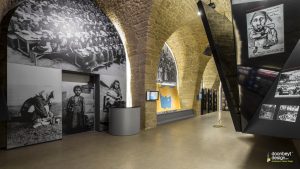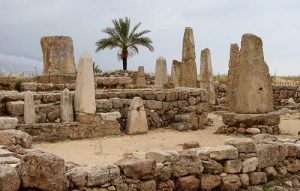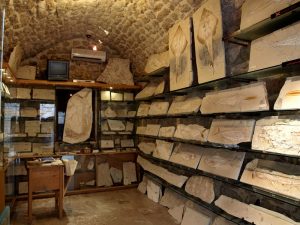Byblos Attractions
Explore Byblos
Byblos Sur Mer reveals the spirit of Byblos city in a warm, peaceful, and romantic setting that honors both past and present. Originally built in 1967, Byblos Sur Mer was reborn in 2010 as a charming boutique hotel where modern luxury marries an odyssey of 7,000 years of history.
Exquisitely set at the edge of the sea, Byblos Sur Mer embraces the ancient port and castle on one side, and an endless expanse of deep blue on the other. We offer our guests the comforts of a home at the heart of a legend, in a carefully decorated space furnished with local art and artisanal wares, ancient relics, and precious items from private collections.
Byblos Sur Mer is a tribute to Byblos and its history as much as it is a first class hotel hosting a full array of amenities at an international standard. We invite our guests to unwind and experience enchanting moments with us that just might be as eternally unforgettable as the city of Byblos itself.
Ancient Ruins
 For over 7,000 years Byblos (or Jbeil) has been a bustling cultural crossroads, passing through the hands of the Phoenicians, the Assyrians, the Greeks, the Romans, the Persians, and the Crusaders. Established as a UNESCO World Heritage site in 1984, the ruins of Byblos date back to 5,000 BC, making Byblos one of the world’s oldest, constantly inhabited cities. Pay an enriching visit to the archeological site and museum, then wander through Phoenician temples, a Crusader castle, and the medieval city walls.
For over 7,000 years Byblos (or Jbeil) has been a bustling cultural crossroads, passing through the hands of the Phoenicians, the Assyrians, the Greeks, the Romans, the Persians, and the Crusaders. Established as a UNESCO World Heritage site in 1984, the ruins of Byblos date back to 5,000 BC, making Byblos one of the world’s oldest, constantly inhabited cities. Pay an enriching visit to the archeological site and museum, then wander through Phoenician temples, a Crusader castle, and the medieval city walls. Phoenician Temples
Byblos Castle
Medieval City Wall
 running about 270 meters from east to west and 200 meters from north to south. While in the city, delight your senses with an excursion around these historic walls where the scent of jasmine and the sight of the old city will carry you back to enchanting medieval Byblos.
running about 270 meters from east to west and 200 meters from north to south. While in the city, delight your senses with an excursion around these historic walls where the scent of jasmine and the sight of the old city will carry you back to enchanting medieval Byblos. The Old Souks
 Shopping takes on a whole new meaning in the old souks, where people have been treading across its narrow pebbled paths in search of textiles, pottery, glass, jewelry, and more for thousands of years. Today the souks feature artisan workshops, trendy boutiques, galleries, and many delightful cafes, bars, and restaurants with sidewalk terraces ideal for soaking up the lively ambiance. To try a hand at living like a local, barter with the souk merchants and enjoy the sweet satisfaction of walking away with a special deal or two.
Shopping takes on a whole new meaning in the old souks, where people have been treading across its narrow pebbled paths in search of textiles, pottery, glass, jewelry, and more for thousands of years. Today the souks feature artisan workshops, trendy boutiques, galleries, and many delightful cafes, bars, and restaurants with sidewalk terraces ideal for soaking up the lively ambiance. To try a hand at living like a local, barter with the souk merchants and enjoy the sweet satisfaction of walking away with a special deal or two. St. John Marc Cathedral
 city was built in 1116 by the crusaders. It was transformed into a stables during the Ottoman rule, but restored to its original function as a cathedral and given back to the Maronite Christians in the mid-1700’s as a gift from Prince Youssef Chehab, in return for helping him to capture the city.
city was built in 1116 by the crusaders. It was transformed into a stables during the Ottoman rule, but restored to its original function as a cathedral and given back to the Maronite Christians in the mid-1700’s as a gift from Prince Youssef Chehab, in return for helping him to capture the city. Armenian Genocide Orphans’ “Aram Bezikian” Museum
 Located at the heart of the ancient site of Jbeil, not far from the 12th century citadel, the Armenian Genocide Orphans’ “Aram Bezikian” Museum is a place of memory, promoting the common values and principles of humanity: concern for others, friendship and tolerance, peaceful coexistence and respect for human rights and human dignity.
Located at the heart of the ancient site of Jbeil, not far from the 12th century citadel, the Armenian Genocide Orphans’ “Aram Bezikian” Museum is a place of memory, promoting the common values and principles of humanity: concern for others, friendship and tolerance, peaceful coexistence and respect for human rights and human dignity. 







